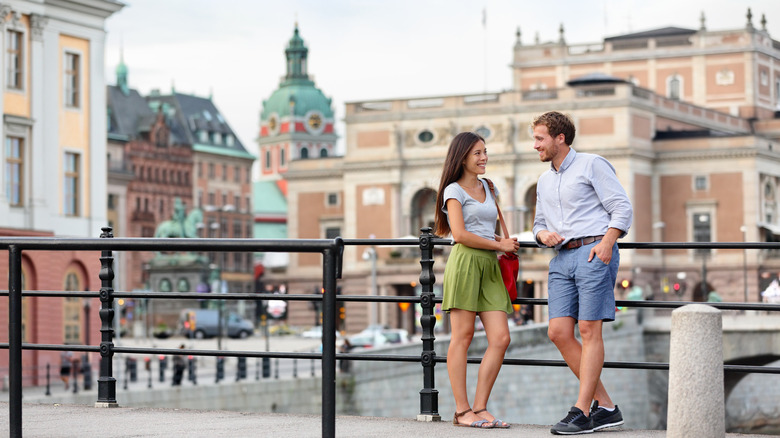The European Country With No Word For 'Please' And What To Say Instead
Before you head to Sweden, you might decide to learn a few basic expressions. "God dag" means "Good day!" "Hur mår du?" is "How are you?" "Får jag sitta här?" is "May I sit here?" Say, this isn't so hard! It's so phonetic! And look how many cognates (similar-sounding words) there are! At this rate, you'll be conversational in no time!
Then you get to "please." A simple word, but helpful, right? How many times do you use the word "please" in a single day, or even one hour? But when you search the dictionary, you can't find it. This is because Swedish doesn't have an exact word for "please." It doesn't really exist.
This absence feels so strange. How does a language function without saying "please"? Here is the most family-friendly country in Europe, yet are Swedes just barking orders at each other? Do they just proclaim, "I want a latte!" or, "Bring me lutefisk!" or, "I am returning this IKEA table and you will replace it immediately!"? This may seem like a linguistic quagmire, but there's actually a simple solution: Instead of saying "please," say "thank you."
How to talk with tack in Sweden
If you've ever studied another language, you know that a lot of phrases don't translate easily, even basic words in languages that are closely related. When the French say "S'il vous plaît" — one of the language's most essential phrases — they're literally saying "If it pleases you," which has a very different tone from the English "please." In German, "bitte" is used for both "please" and "you're welcome," among several other meanings, which can confuse learners. Even in English, we have many ways of saying "please" without actually using the word. "Would you be a dear and grab that for me?" "If you could hold the elevator a sec, I'd appreciate it." These phrases are still considered gentle and polite, with no "please" spoken.
If you're serious about learning basic Swedish, you can use "tack," which sounds pretty much like the equivalent English word. This means "thank you," and you can put it at the end of a request. For instance, you might ask a clerk in a clothing store, "Får jag prova den här? Tack." You're literally saying "Can I try this one on? Thanks!" But everyone will understand you as saying, "Can I please try this on?" Instead of saying please, Swedes tend to say "thank you" a lot.
This probably won't be an issue, since 89% of Swedish people speak English as a second language (via History of English), but if you don't hear "please" as often as you're used to, this omission is likely the cause. It's a small cultural quirk, but it speaks volumes. Now that you've figured out how to express "please," it's time to learn "Can you direct me to the beautiful European castles? Thanks!"

